AMD AM1 Kabini Part 2: Athlon 5350/5150 and Sempron 3850/2650 Tested
by Ian Cutress on May 29, 2014 2:00 PM ESTSynthetic IGP Benchmarks
Unity – Graphic Scene 720p: link
As part of my IGP testing I went searching for a couple of new Unity based benchmarks to help decipher the line between the desktop graphics solutions and those that are not so great. First up is a graphical humdinger, implementing a complex scene with lighting effects (including fluid simulation, shadows, SSAO, Bloom). We run the benchmark at 720p with the highest graphical settings, reporting the average FPS.
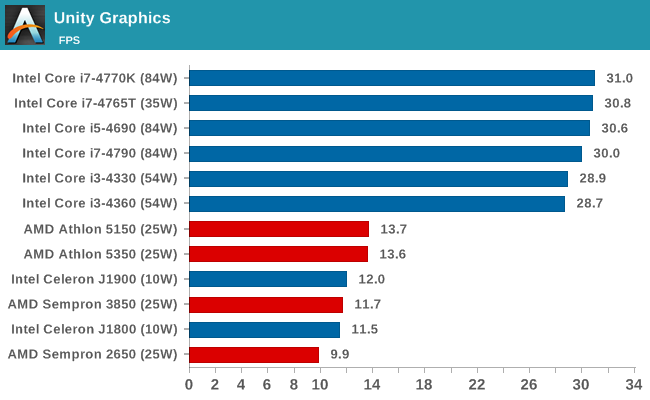
Unity – Draw Calls: link
Next up is a benchmark limited by draw calls rather than rendering complexity. The scene generates simple Nintendo Gamecube polygons that fall due to gravity and bounce around until stationary. The scene continuously spews out these polygons until three consecutive frames fall under a 20 FPS average. We run the benchmark at 720p at simple graphic settings to minimize the graphical complexity, and take the average of several runs.
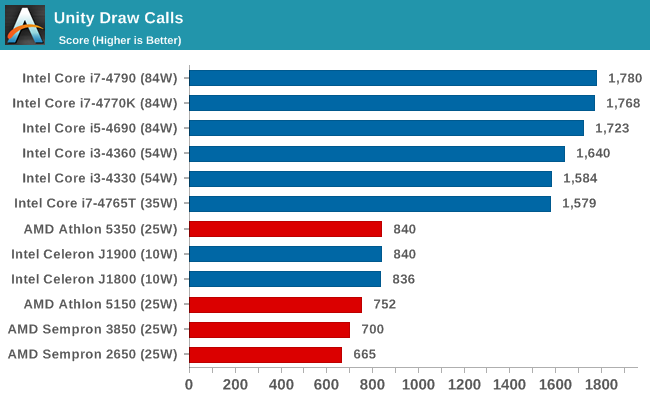
3DMark
The synthetic tools from Futuremark have been on the benchmarking landscape for over a decade, with each generation designed to tackle new problems as either the CPUs or GPUs become too powerful. Here we test 3DMark 06, 3DMark 11 (Performance), the latest 3DMark and 3DMark Vantage’s pixel/texel tests.
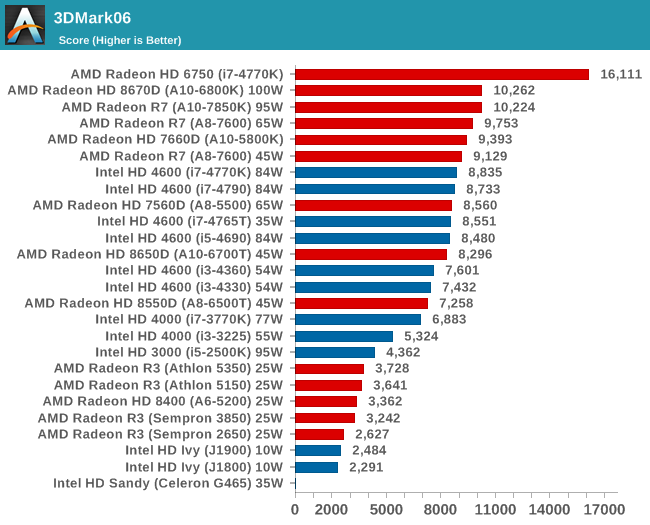
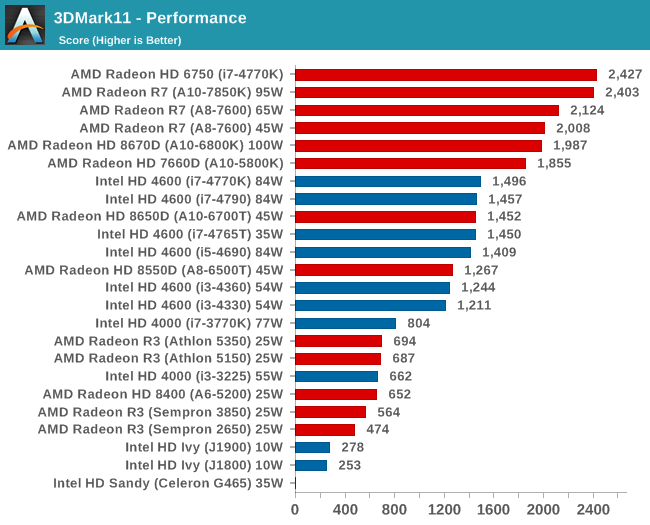
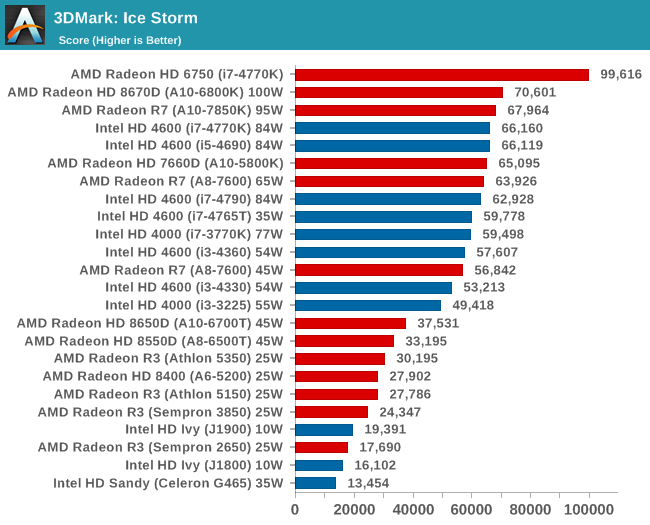

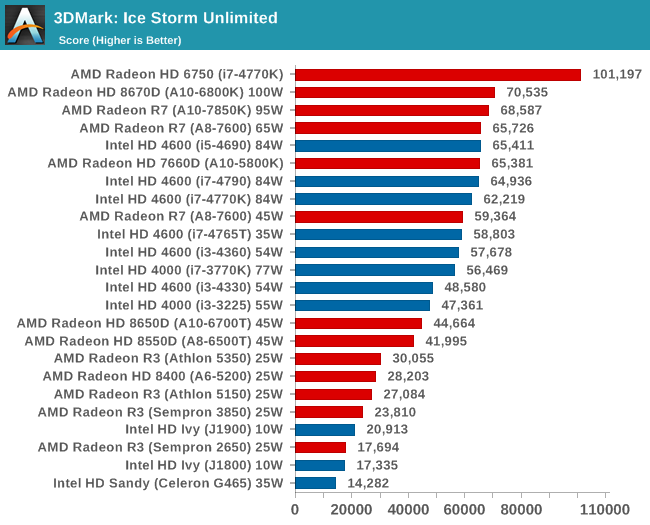
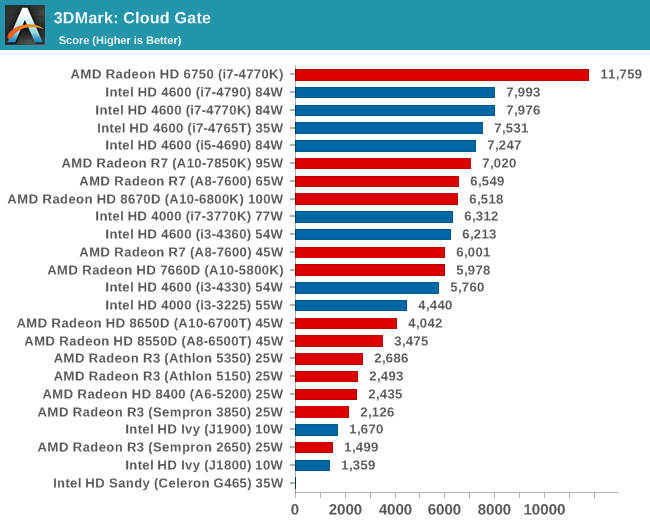
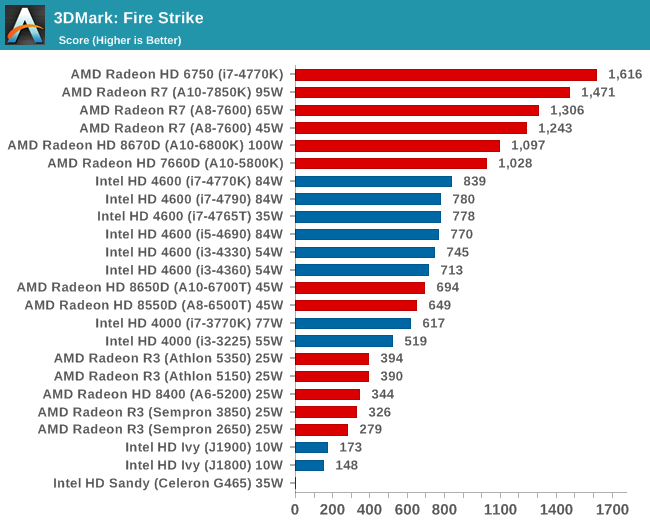

Tessmark
The latest version of TessMark is designed to focus on tessellation via OpenGL 4. We run the latest version of the benchmark using the high resolution map set at maximum tessellation while 1080p full screen, reporting the average FPS.
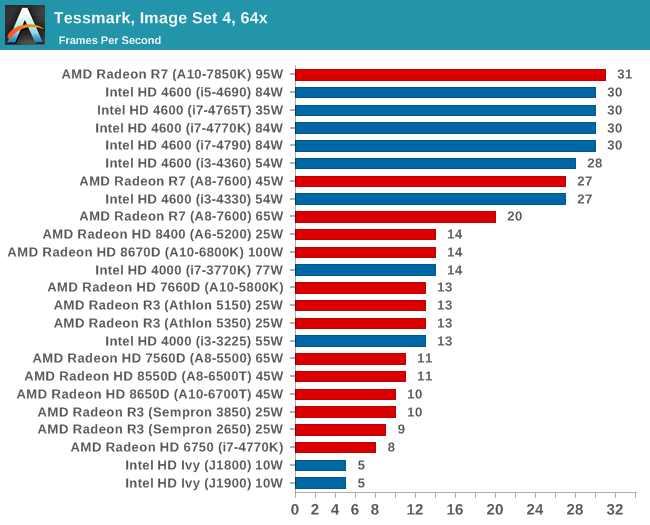










87 Comments
View All Comments
serpretetsky - Thursday, May 29, 2014 - link
I'm not sure I understand the power chart on page 2. Is the title correct? Power difference? So the numbers we are seeing are power differentials between idle and load and not absolute values?casteve - Friday, May 30, 2014 - link
Ian uses a 1250W PSU in this setup. So, absolute value is pretty meaningless when your system idles down in the low efficiency (and high slope) part of the power supply's curve. The delta power part at least provides an idea of what's going on.jospoortvliet - Sunday, June 1, 2014 - link
Yet idle power is quite important - cpu's are idle most of the time...coburn_c - Thursday, May 29, 2014 - link
There's your future of AMD. Scaling up Jaguar will fix their code/module problems and improve their perf/watt. There is certainly no future in their big cores.rootheday3 - Thursday, May 29, 2014 - link
Ivy Bridge gt1 was 6 eus; bay trail is 4 eus.jvp - Friday, May 30, 2014 - link
What is missing in this review is that some Intel processors have stripped down instruction sets. Like the Celeron J1900 with which the Athlon 5350 is compared as direct competitor.I'm also missing tests about performance when using virtual machines, and hardware accelerated encryption. These are area's that are becoming more and more important for systems.
R3MF - Friday, May 30, 2014 - link
this is lovely, thanks, but how long before we get beema in socket AM1?R3MF - Friday, May 30, 2014 - link
in addition, do i understand correctly that:kabini is 28nm TSMC, whereas
beema is 28nm GF
plonk420 - Friday, May 30, 2014 - link
thank you thank you THANK YOU for including i3-4300 series on the dGPU page! i've been wondering how they stand up to gaming on a budget as i've helped do 2 builds in the last couple months for the first time in years!Icehawk - Friday, May 30, 2014 - link
I'm with prior posters - testing these low end machines with current games is all well and good but also unlikely to happen in real life. Can these handle games I'd be more likely to want to play on a low power device like TF2 or Diablo 3? NO CLUE.